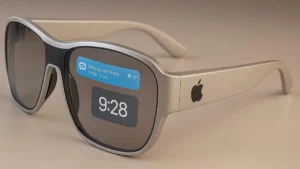
In the dynamic landscape of wearable technology, smart glasses are emerging as a transformative force, poised to redefine how we interact with the digital and physical worlds. As tech giants like Apple and Meta race to dominate this space, their evolving product lines suggest that smart glasses are not just a niche gadget but the next frontier of human-computer interaction. And while much of the spotlight remains on North America, Europe, and Asia, Africa’s growing tech ecosystem signals that the continent could be a pivotal player in the smart glasses revolution.
A Global Vision: Apple’s and Meta’s Smart Glasses Strategy
Apple’s approach to smart glasses is layered and ambitious. According to industry analyst Ming-Chi Kuo, Apple is set to roll out a family of seven head-worn devices over the next several years. Among the most anticipated are a set of XR glasses projected to debut in 2028, featuring liquid crystal on silicon (LCoS) displays, AI integration, and voice and gesture controls. In the near term, we can expect a Vision Air in 2027, offering a lighter, more affordable version of the current Vision Pro, powered by an iPhone-class chip.

Meanwhile, Meta has taken a more pragmatic and fashion-forward path. Its collaboration with Ray-Ban has already produced millions of units sold and a new wave of AI-infused eyewear. The Ray-Ban Meta Smart Glasses now include live translation capabilities, music integration, social media connectivity, and real-time AI assistance. Designed for everyday use, these glasses let users livestream, send messages, and even get cooking advice—all hands-free. Their recent expansion into India hints at a broader strategy to capture emerging markets.
Meta’s partnership with Oakley also introduces a new category: Performance AI Glasses. The Oakley Meta HSTN is aimed at athletes and outdoor enthusiasts, boasting features like water resistance, 3K video recording, and sports-specific AI insights. These are not just gadgets; they are performance-enhancing tools wrapped in stylish, durable frames.
The African Opportunity: A New Lens on Innovation
Africa’s rapidly growing tech-savvy population presents a unique opportunity for smart glasses to gain traction. The continent has long leapfrogged traditional tech stages, going from limited internet access to widespread mobile penetration. Smart glasses could follow a similar trajectory, especially in urban centers where digital adoption is accelerating.
Consider the impact of Meta AI’s real-time translation features in multilingual societies across Africa. In cities like Harare, Nairobi, Lagos, and Johannesburg, where dozens of languages converge, such functionality could dramatically ease communication in public services, tourism, and cross-border trade. Moreover, the potential for smart glasses to assist in education, healthcare, and logistics aligns well with many African nations’ development priorities.

Fashion also plays a significant role. With brands like Ray-Ban and Oakley leading the charge, smart glasses offer not just utility but cultural cachet. African youth who are already global trendsetters in music, fashion, and digital content could drive adoption through localized styles and use cases. Imagine Zimbabwean artist like Ammara Brown or capturing a behind-the-scenes music shoot through her lenses or Nigerian content creator livestreaming a Lagos street festival or a Kenyan tour guide offering AI-enhanced wildlife tours.
Challenges and Catalysts
Of course, several challenges remain. Cost is a major barrier, with devices like the Oakley Meta HSTN starting at $399 USD. For example, I purchased my Ray-Ban Skyler glasses for $411, which highlights how expensive these types of smart eyewear can be for the average consumer. However, as production scales and more players enter the market, prices might drop. Additionally, infrastructure issues like inconsistent internet connectivity may limit functionality in some regions, though offline capabilities such as pre-downloaded language packs offer partial solutions.
The success of smart glasses in Africa will also depend on partnerships between tech firms, local governments, and educational institutions to create relevant applications and distribution models. If done right, Africa could become not just a consumer market but a creative hub for smart glasses innovation.
Looking Ahead

Smart glasses are poised to become the smartphone’s stylish, AI-powered successor. While Apple and Meta set the pace globally, Africa stands ready to shape the narrative in ways the world hasn’t yet imagined. From bustling markets in Accra to tech hubs in Cape Town, the future of smart glasses isn’t just being built in Silicon Valley it is being envisioned on every continent!

